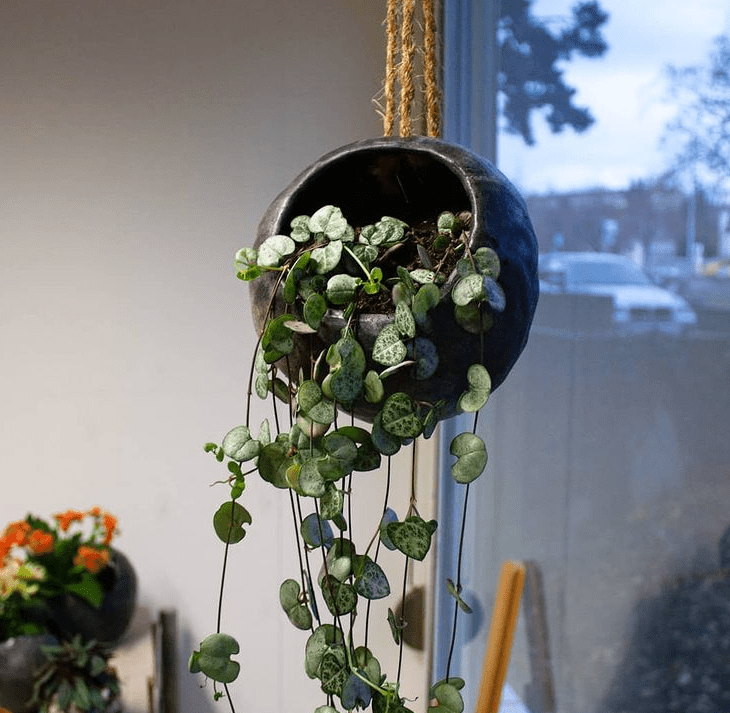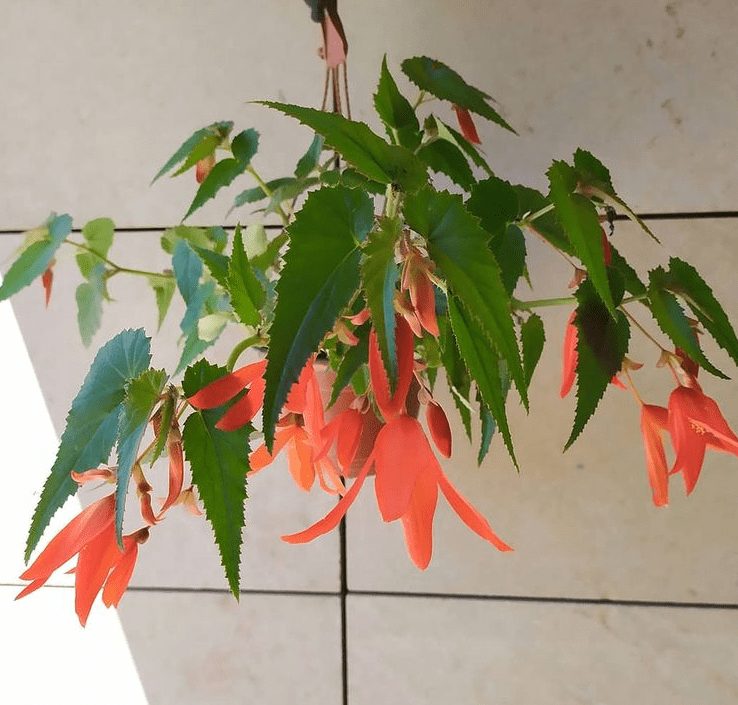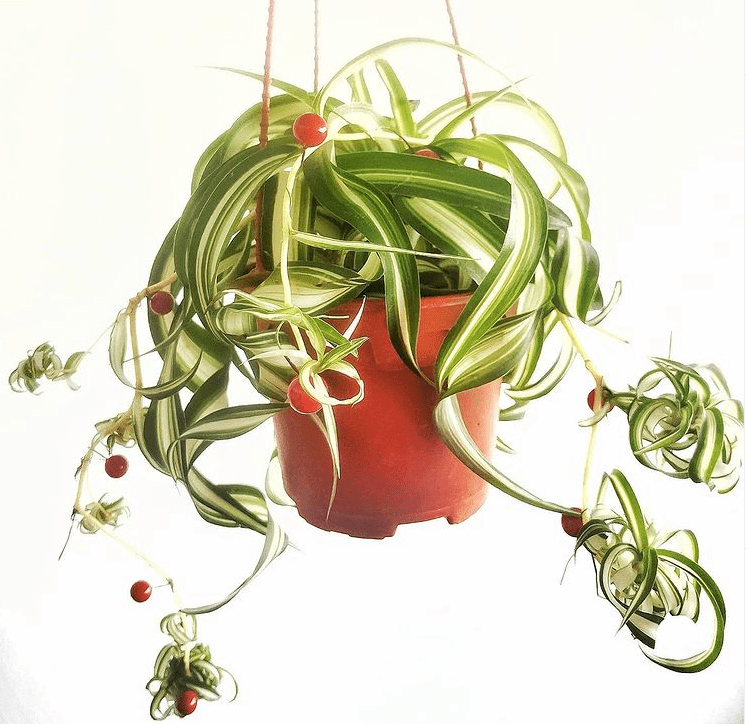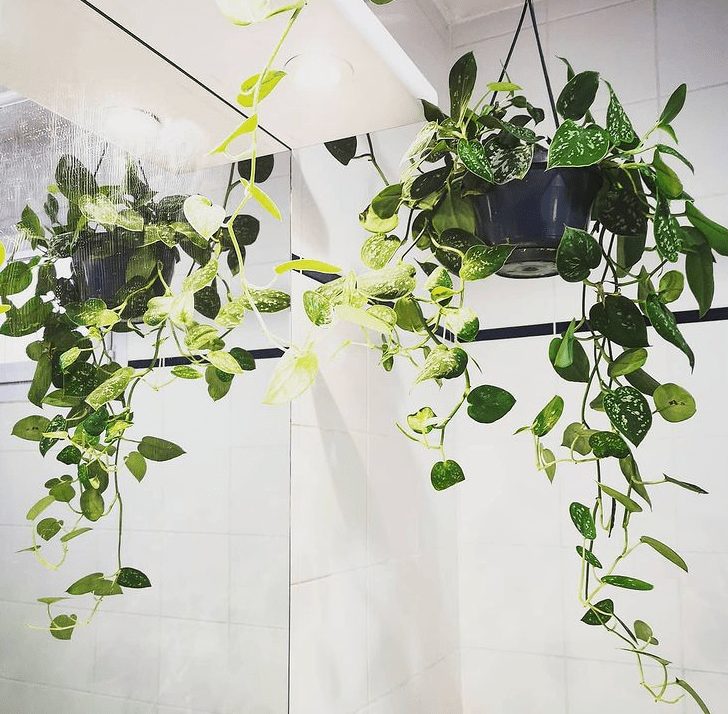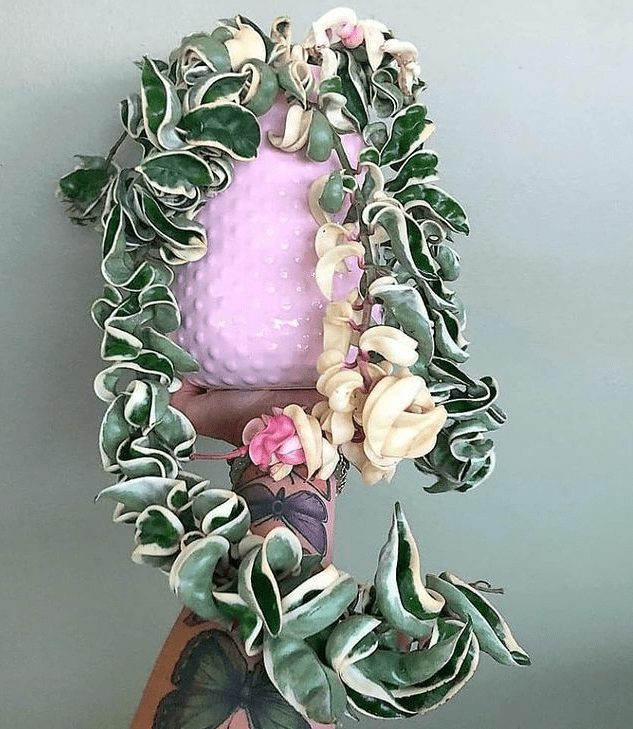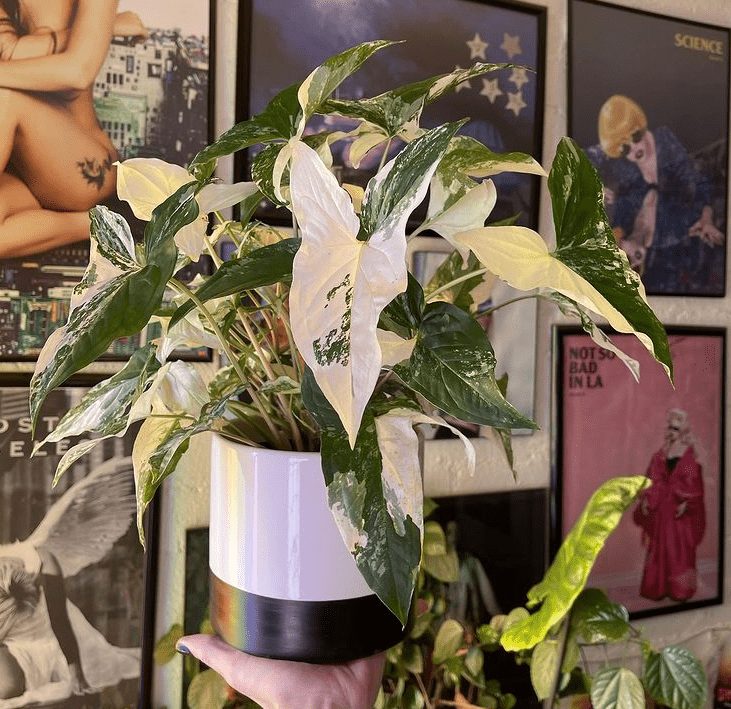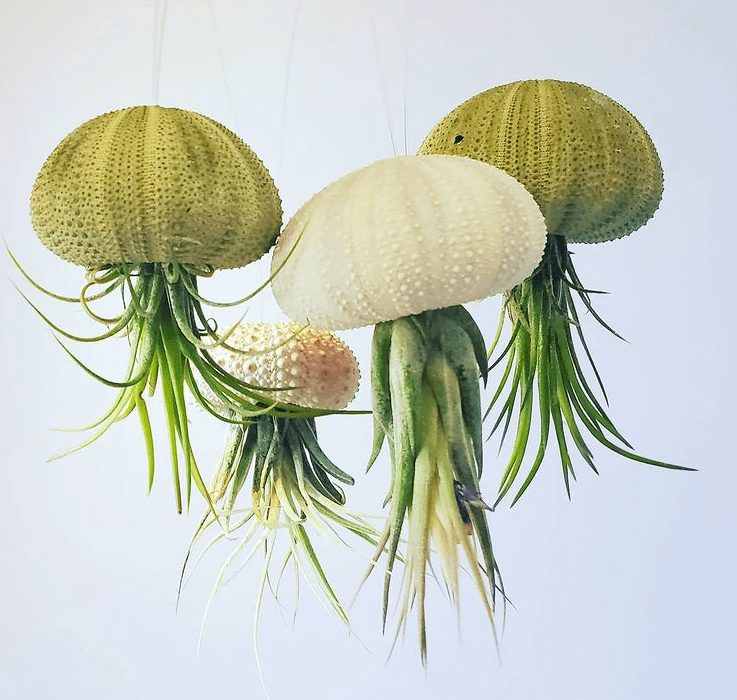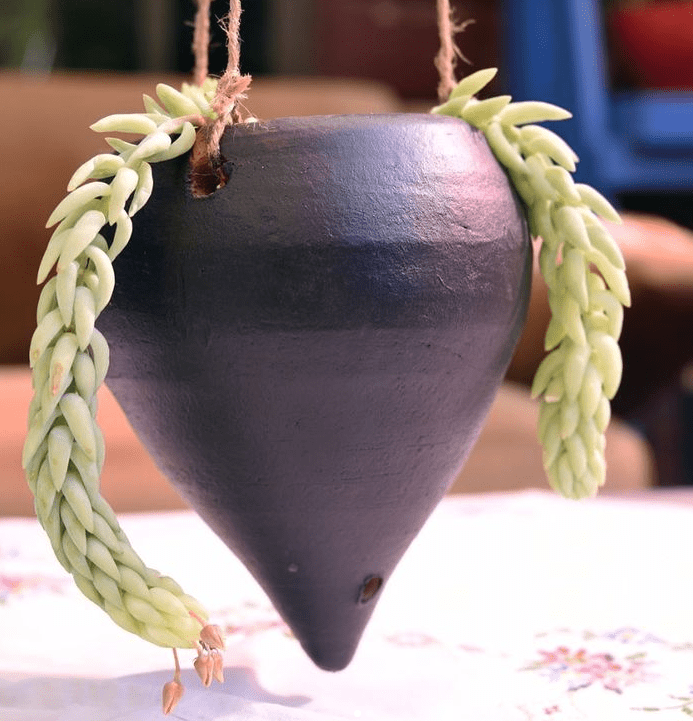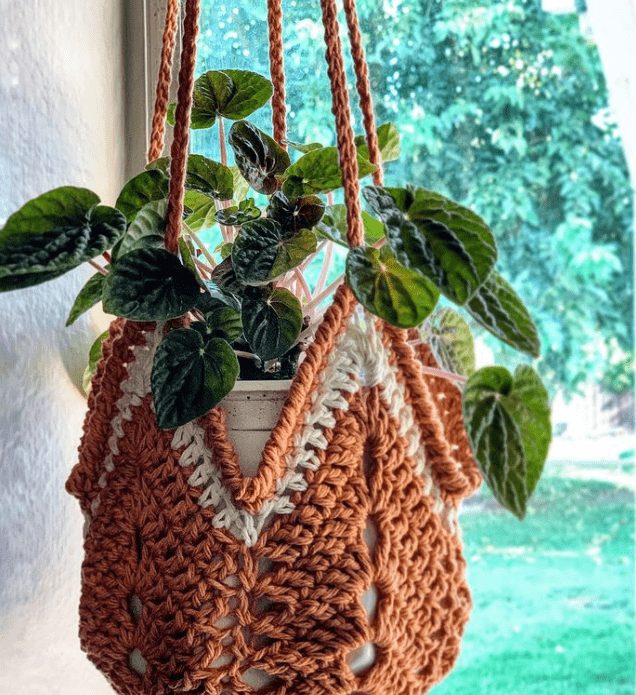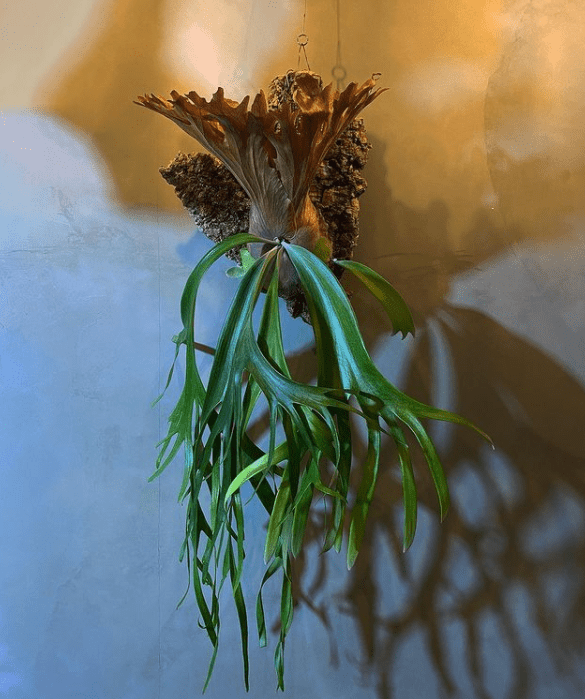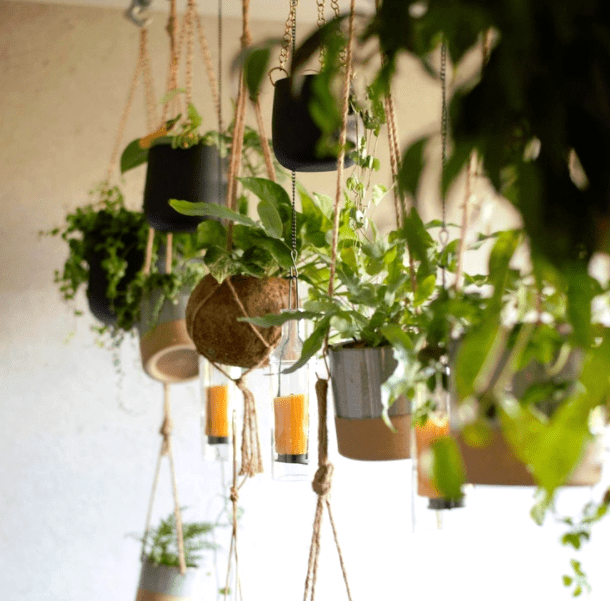Hanging plantsRecently, hanging plants have become a new trend for garden decoration. There is a large collection of dropping and trailing plants that can be used for this purpose. We can find mini-plants that have small leaves, such as Peperomia and Ceropegia, succulents such as Sedum and Senecio and plants with large leaves such as Philodendron and Syngonium. Hanging your potted plants is a great way to showcase your favorite plants in style and add a jungle effect, a touch of color and life to any space.
If you finally choose to bring hanging plants home, be prepared, as special care is required. First, make sure you choose the right pot for each species and for each plant size. Then find out about the appropriate requirements for each indoor plant type, which means light, water, fertilizer and other needs. Also, you need to know that hanging plants can be a little harder to do and plants are harder to reach than regular houseplants, so be sure to get all the necessary equipment (such as a scale, a water jar …). In this article you will find the most popular and most used hanging plants for home decoration. Enjoy!
Most popular hanging plants
1- Senecio rowleyanus
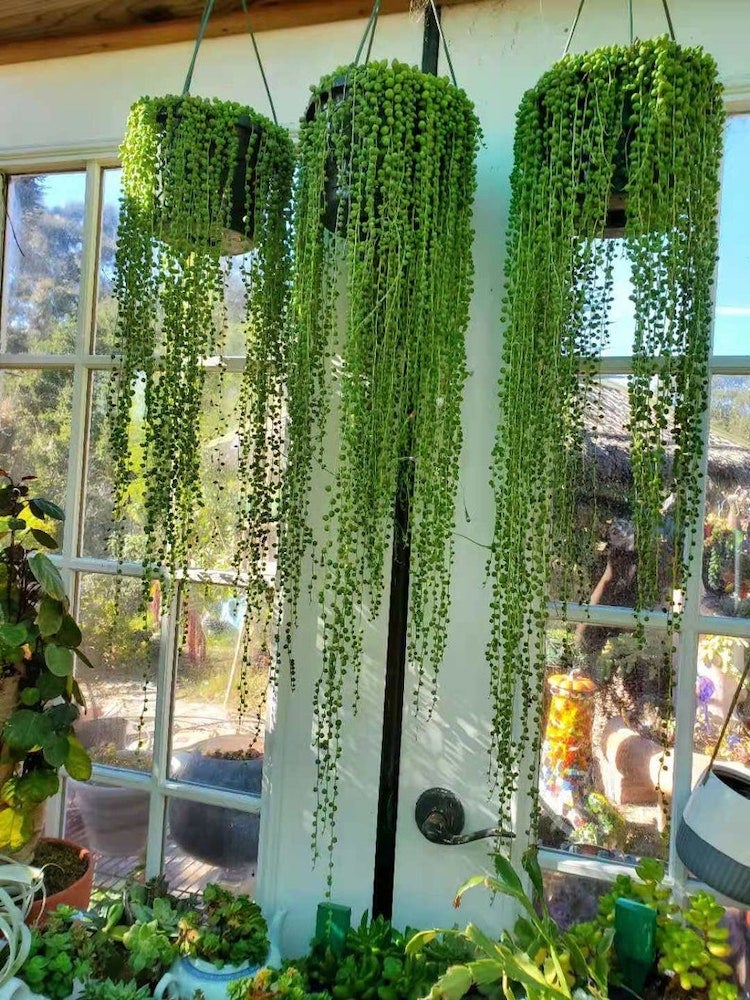
Senecio rowleyanus, also called pearl string, is among the best hanging plants belonging to the family Asteraceae, native to southern Africa and Namibia. It has a creeping or falling shape with branched stems bearing foliage of almost spherical, small pea-shaped leaves that look like a river. This succulent houseplant also blooms in summer with whitish small flowers in the shape of a shrub. This beauty needs well-drained soil, less water and strong but indirect sunlight. (Find out the most popular string plants and how to care for them here: https://plantsbank.com/7-popular-types-of-string-plants/).
2- Ceropegia woodii
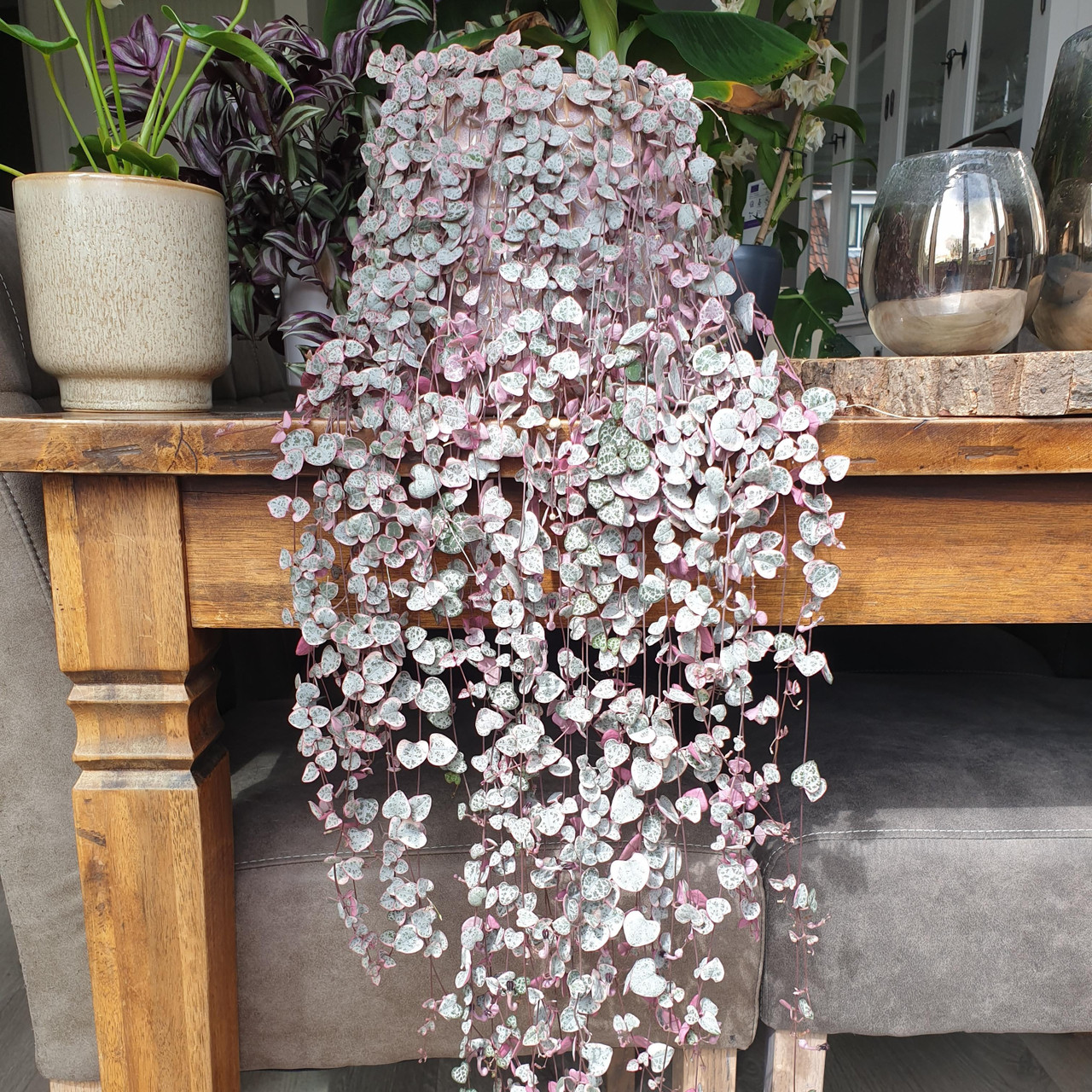
Ceropegia woodii, also called the “string of hearts”, is the star of plants. It is a perennial plant native to South Africa that belongs to the family Asclepiadaceae. Heart cord is ideal to give as a gift on special occasions because of their wonderful heart-shaped leaves. This tuberous plant has long succeeding stems with small pale to dark green leaves. In addition, tubular, pink flowers appear in late summer to early autumn and last up to 6 weeks.
String of Hearts is easy to care for plants, just give it strong light (but indirect light) and full sun for at least 3 hours a day. Watering every ten days should suffice during the growing season. In the fall, gradually reduce the frequency of watering.
3- Begonia boliviensis
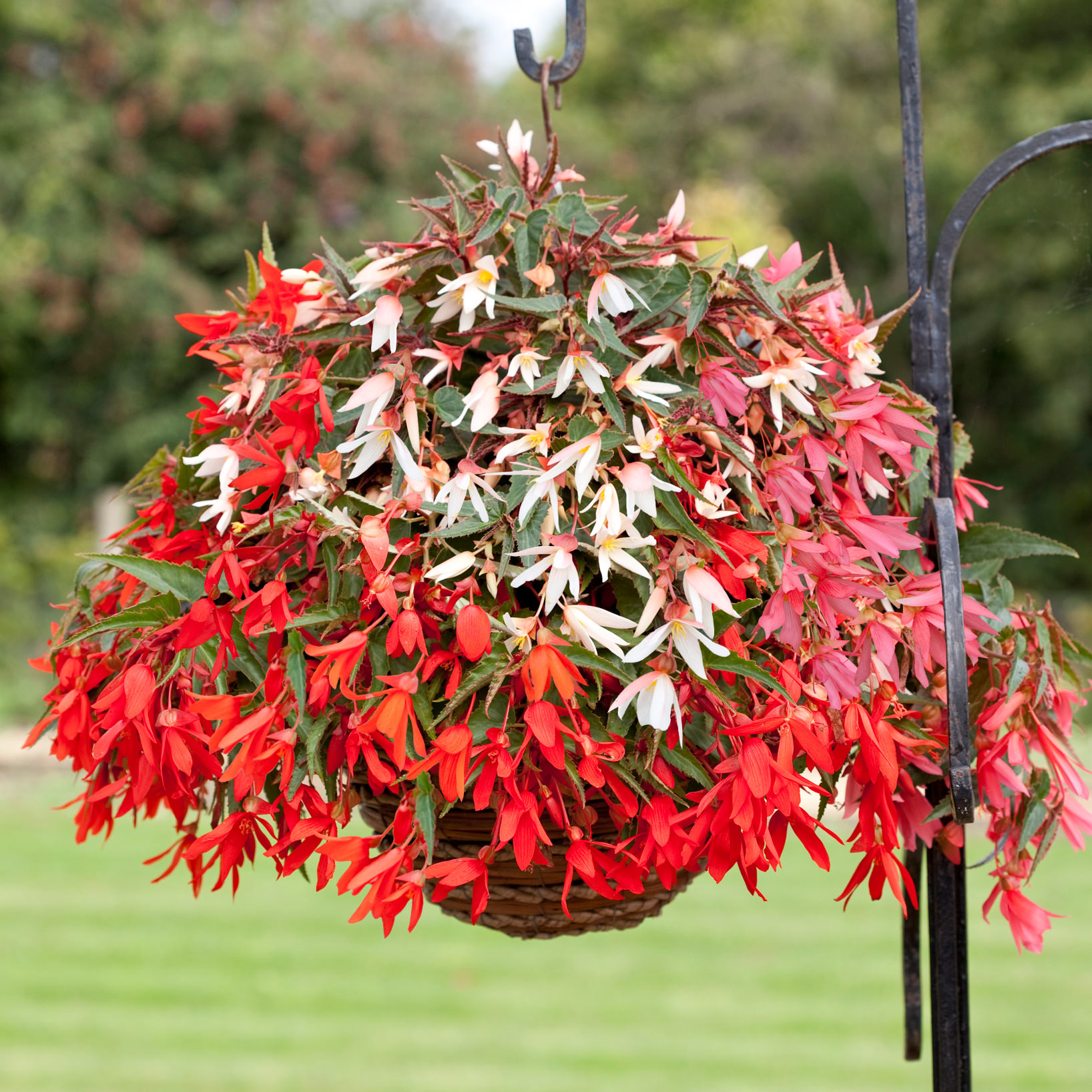
Begonia boliviensis, also known as ‘Santa Cruz’ and ‘Begonia Bonfire’, is a very showy perennial plant belonging to the family Begoniaceae. These lovely indoor hind plants have angel-winged leaves with red edges and can grow up to 60 cm high. This Begonia species also produces burning reddish-orange bell-shaped flowers that cover the plant from late spring to summer. Begonia boliviensis likes sunny locations, well-drained soil and regular watering.
4- Chlorophytum comosum
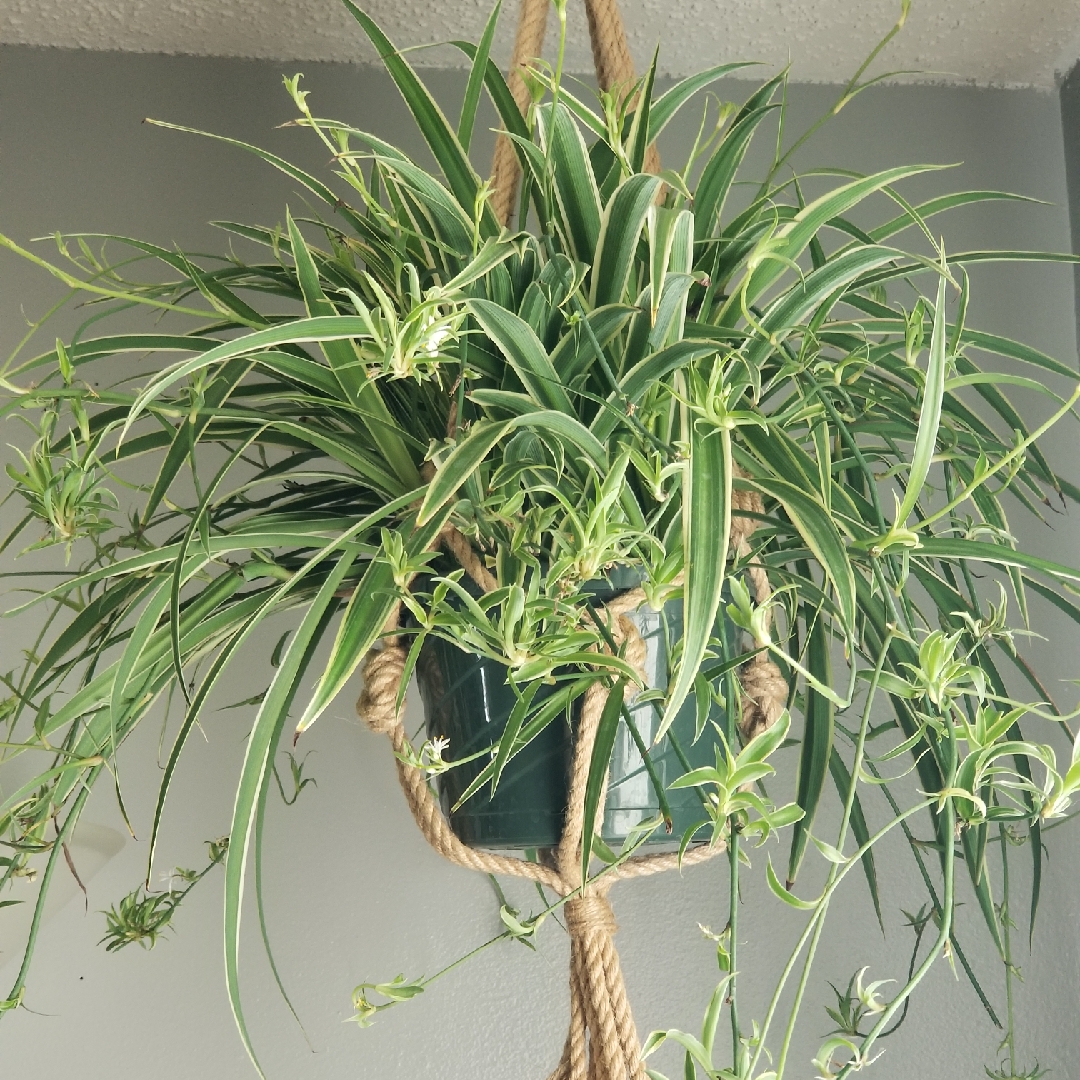
Chlorophytum comosum, also called spider plant, airplane plant or ribbon plant, is a flowering perennial plant that belongs to the family Asparagaceae. Spider Plant is one of the simplest indoor hanging plants that has an interesting, graceful, cascading habit when full. This plant is characterized by rosettes of recycled, soft, green or striped white leaves and an elongated variety of small, white and starry flowers. It also has plants formed at the flowering nodes; do not fertilize too much as this reduces the formation of plants. Spiderplant prefers strong, indirect light and spreads easily through seedlings or division.
5- Hedera helix
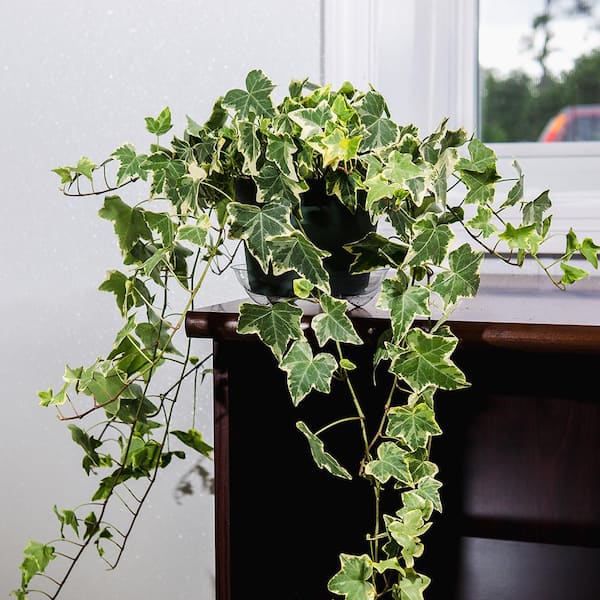
Hedera helix, known as English Ivy or common Ivy, is a common perennial climber that can be used outdoors as a ground cover or indoors as a hanging houseplant. English Ivy has deep green, shiny, leathery leaves with a strong odor when crushed. In addition, this fast-growing plant in its natural habitat produces round, umbrella-like clusters of greenish-white flowers from October to November followed by blue-black berries. This elegant ornamental plant is widely admired not only for its cascading vines but also because it will adapt to low light conditions.
6- Epipremnum aureum
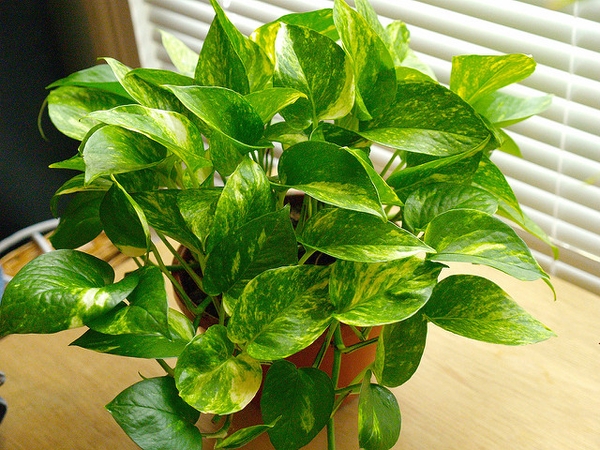
E. aureum has the common name “Golden Pothos” or “Devil’s Ivy” and it is a very easy to grow plant that can be adapted to most conditions. This perennial evergreen plant has shiny, heart-shaped, green or variegated leaves 𝐛𝐨𝐫𝐧e by long, cascading stems.
Characteristic of Golden Pothos is that it is most tolerant and adaptable to lower light conditions, which makes it a suitable plant for all parts of your interior. In addition, Golden Pothos even works to purify the air in your home, absorb and remove certain chemicals and toxins.
7- Hoya sp.


The hoya plant, often overlooked, is surprising, mysterious and can offer spectacular flowering, so it is usually grown as a potted plant on support or hanging from a suspension. Some grow very fast while others grow very slowly.
In fact, Hoyas are increasingly used to beautify our interiors firstly because of their large, thick, waxy leaves and their small clusters of star-shaped flowers, secondly because they are non-toxic to humans and pets and finally because they is so easy to take care of. The most Hoya species used as hanging plants are Hoya carnosa compacta, Hoya linnearis and Hoya curtisii.
8- Syngonium podophyllum
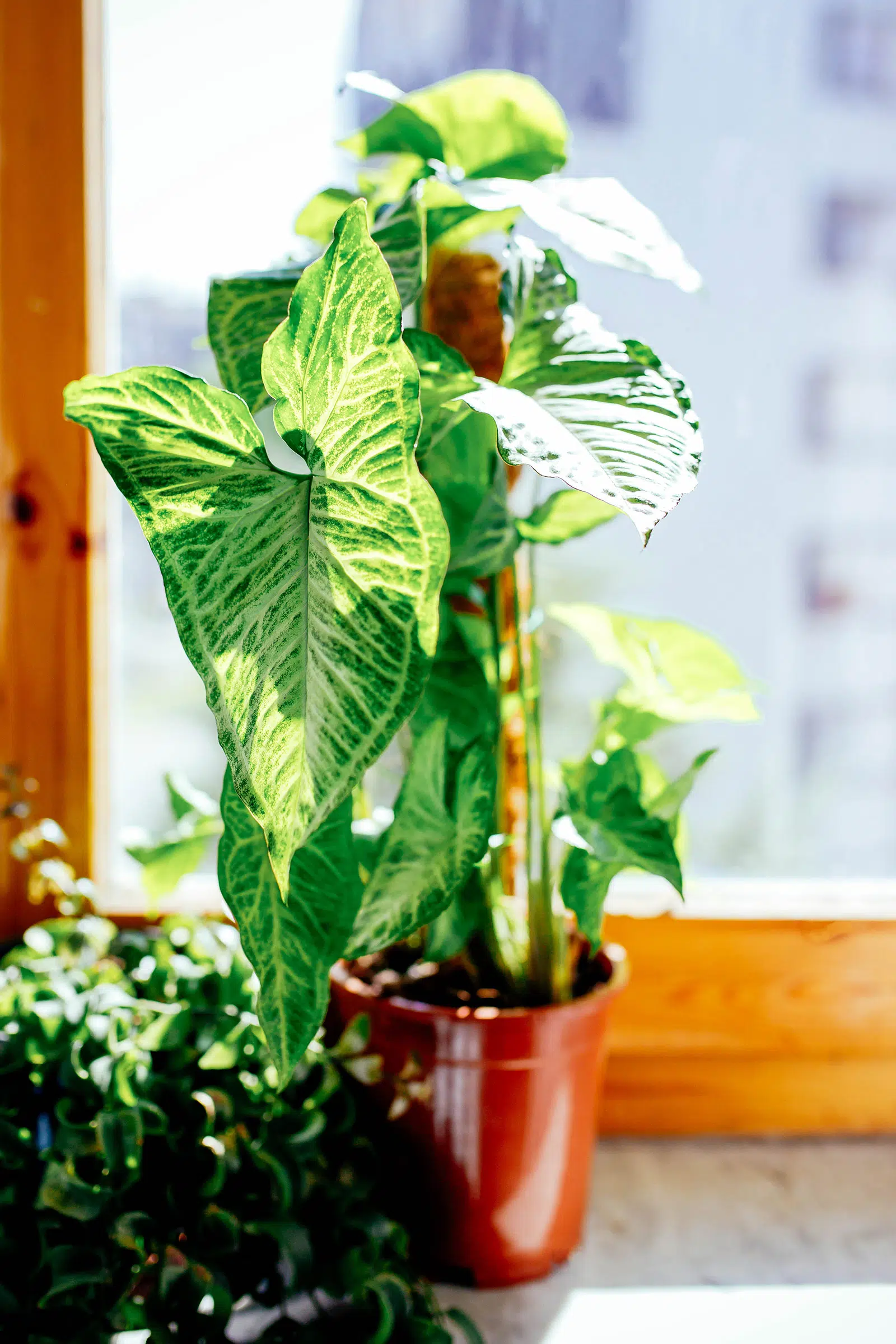
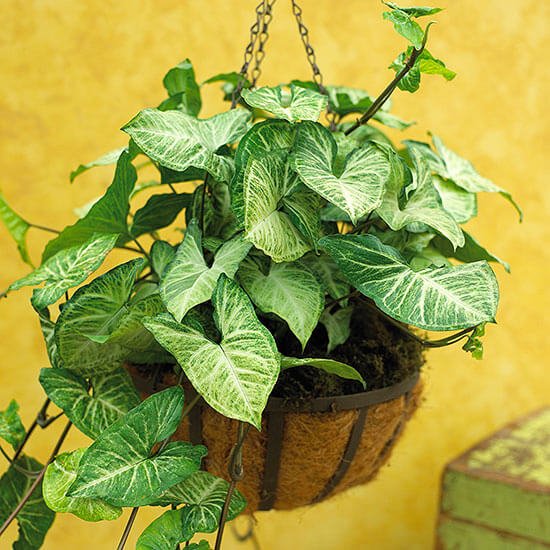
S. podophyllum, also known as Arrowhead Plant, Five Fingers or Nephthytis, is a tropical, perennial climbing plant that can grow up to 2 m tall. The leaf structure of the plant changes as it matures and goes from large, arrow-shaped leaves that are veined and filled with silvery to deeply lobed or split mature leaves. This plant is actually very easy to care for because it is a low tolerant houseplant and will grow almost anywhere in your home. Add it to your wish list with plants for hanging baskets.
Warning! Arrowhead Plant is toxic if swallowed, so be very careful if you have pets or 𝘤𝘩𝘪𝘭𝘥ren.
9- Tillandsia
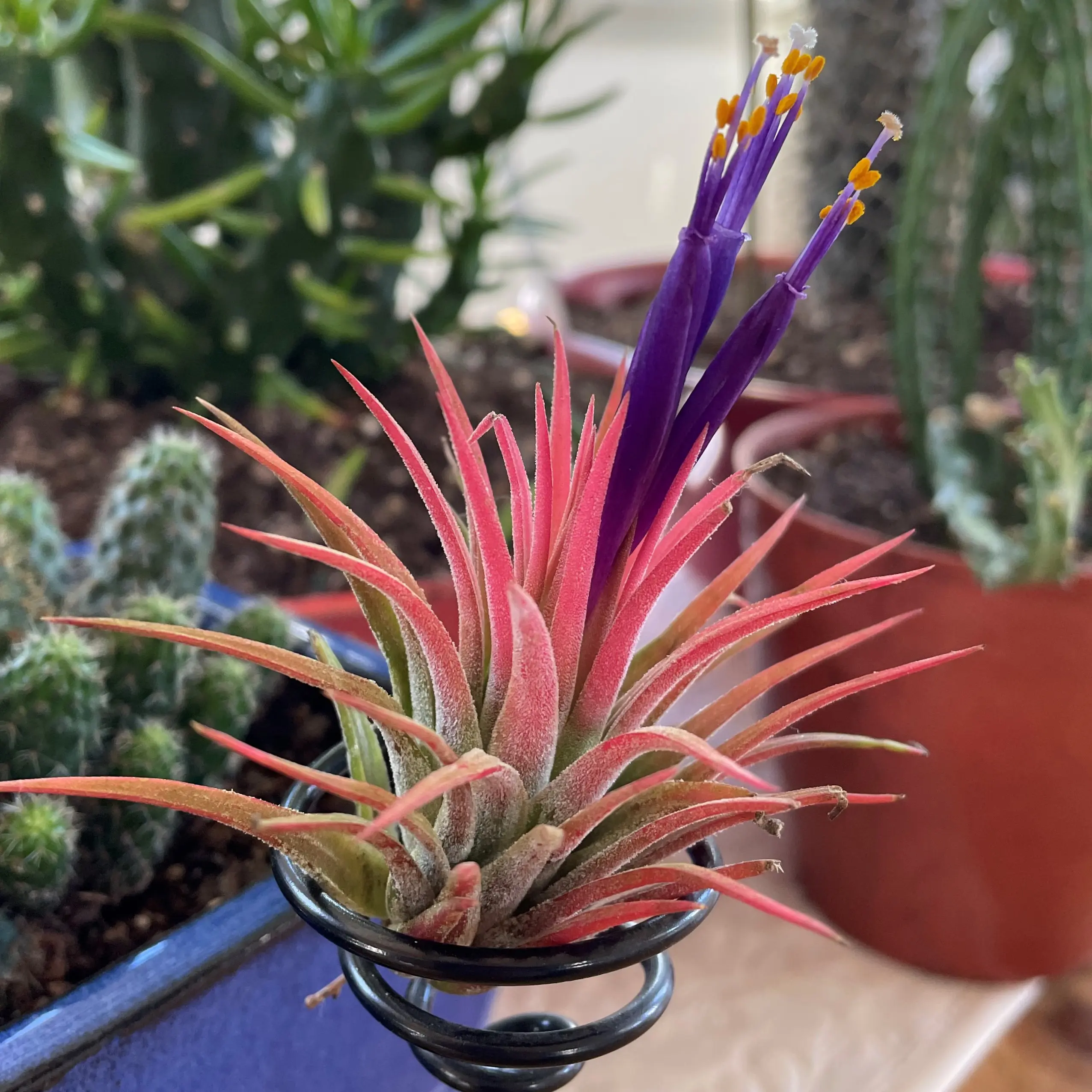
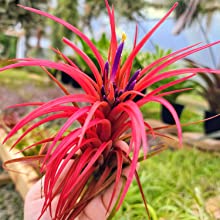


Tillandsia, commonly known as aerial plants, are epiphytic species that do not require potted plants to grow. Air plants are really very hard and require much less attention than other houseplants. So every gardener should try aerial plants at home. These members of the Bormeliad family have silver, fleshy leaves and most of them produce attractive flowers once in a lifetime. After flowering, they begin to produce offsets that will also bloom in turn. These flowers can last from several days to many months, depending on the species. Finally, Ait plants are perfect for craft projects such as aerium and assembly creations.
10- sedum morganianum
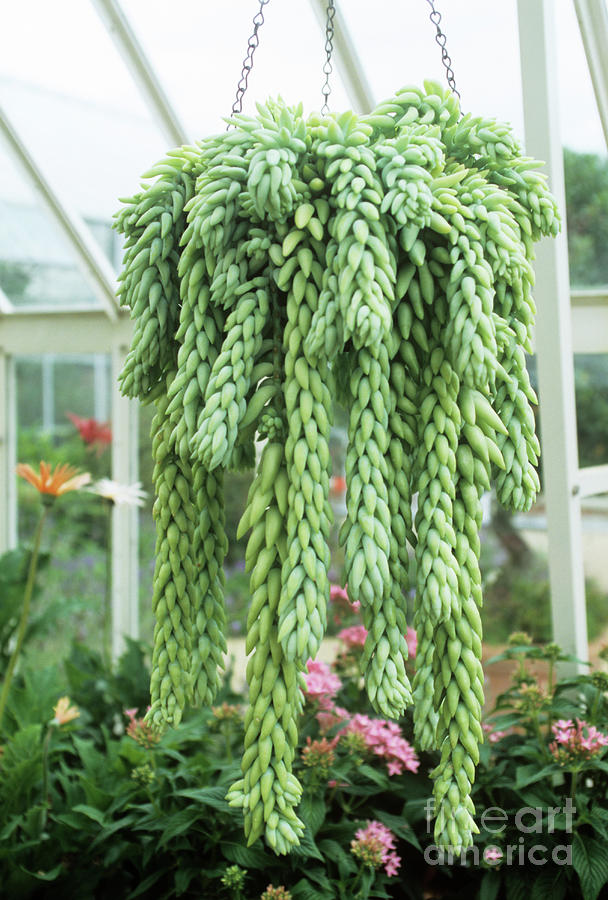
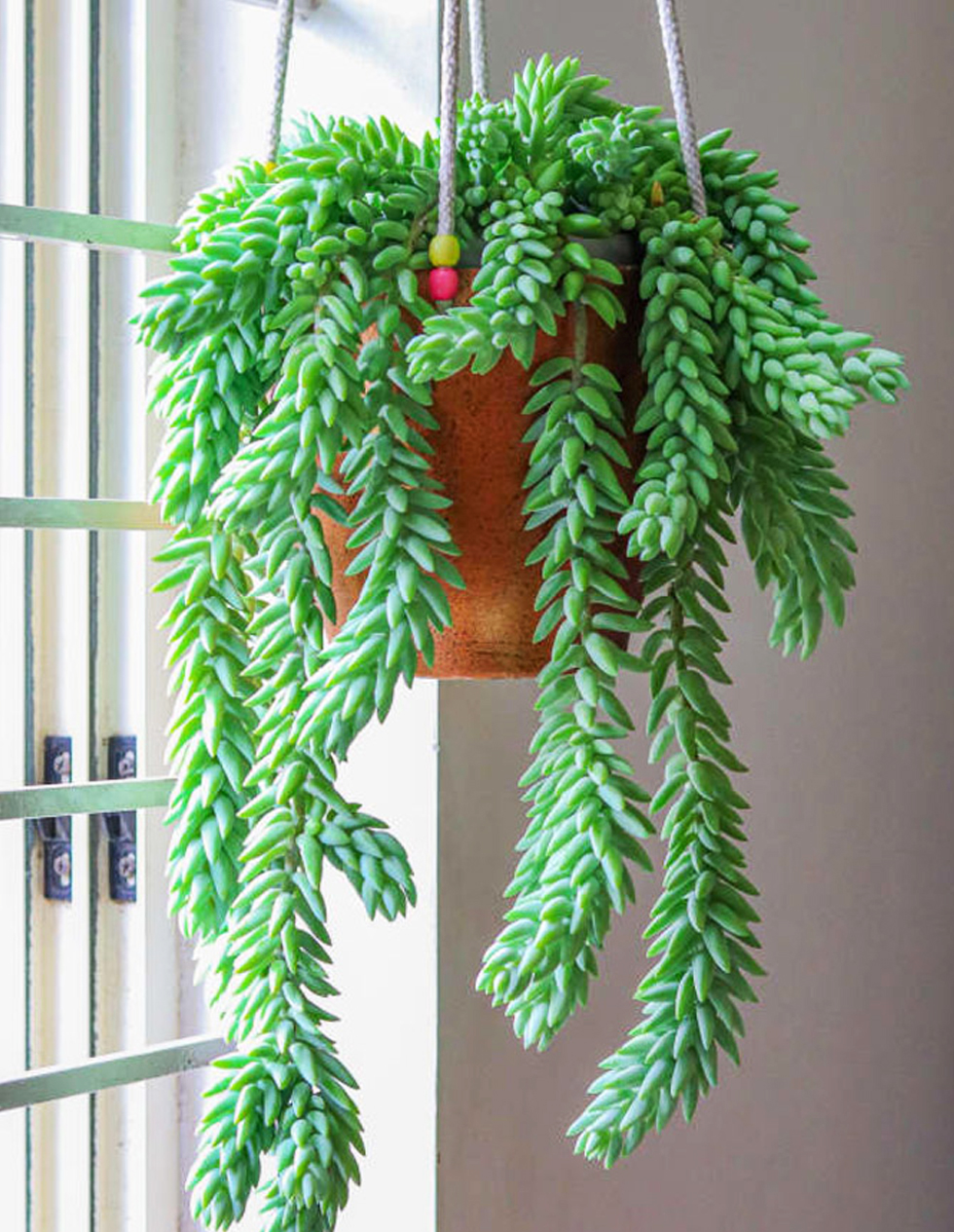
Sedum morganianum, commonly known as burros tail or donkey tail, is a flowering succulent plant of the family Crassulaceae. The long stems are drooping and bear thick, fleshy, blue-green and lanceolate leaves. Beautiful pink to red flowers appear in final clusters with 1-6 flowers in summer. Like other succulents, burros’ tail needs strong light and should dry completely between waterings.
11- Acalypha hispida
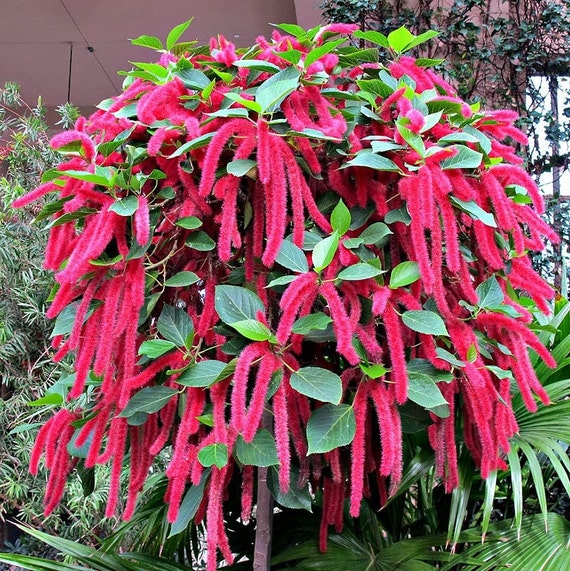
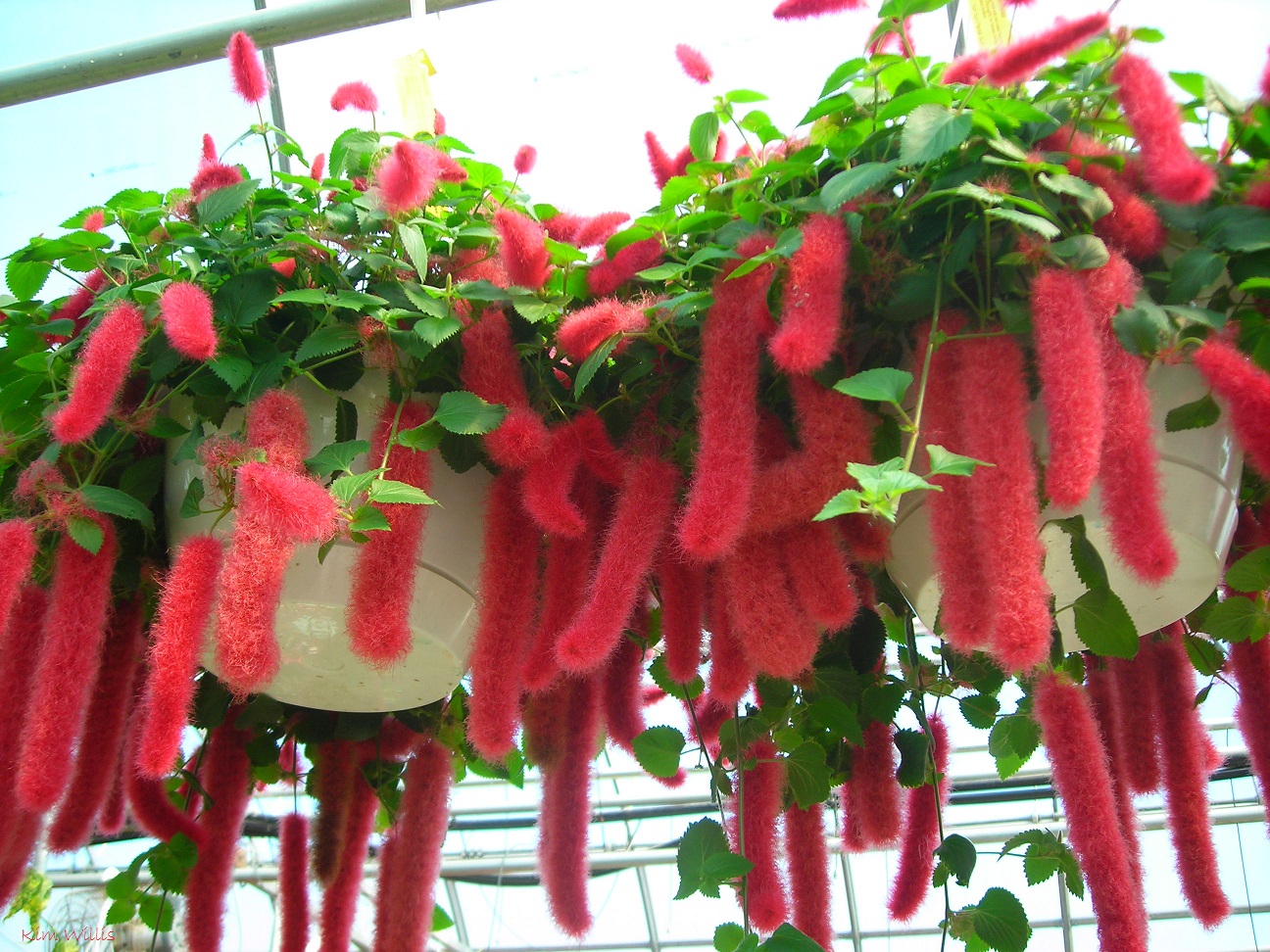
A. hispida, also called Red Hot Cat’s Tail or Chenille Plant, is a tropical flowering shrub of the family Euphorbiaceae. These plants have, ovate, deep green, long leaves and long, drooping, drooping, cat-like racemes of small, showy, red flowers. In addition, the attractive colors of the plants make them ideal for indoor decoration, just prune it to keep it healthy longer.
12- Peperomia Caperata
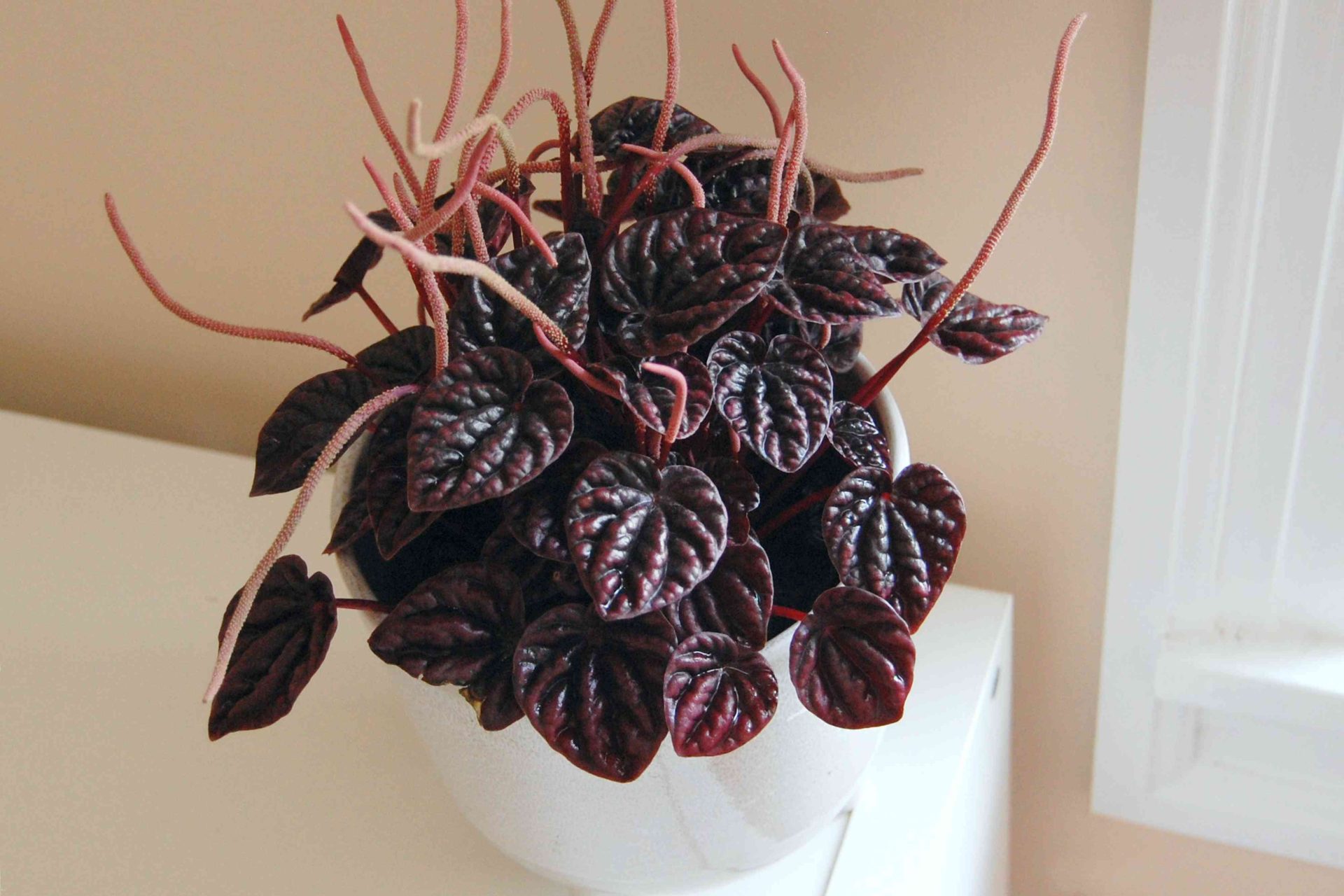

P. caperata, also called Ripple Peperomia, is an evergreen, semi-succulent plant belonging to the family Piperaceae. This wonderful species has red to purple stems of heart-shaped leaves that come in a variety of colors, including green, red, gray and cream. In the summer until early autumn, narrow, rat-tail-shaped flower spikes are produced. This Peperomia species is one of the easiest houseplants to grow.
13- ferns

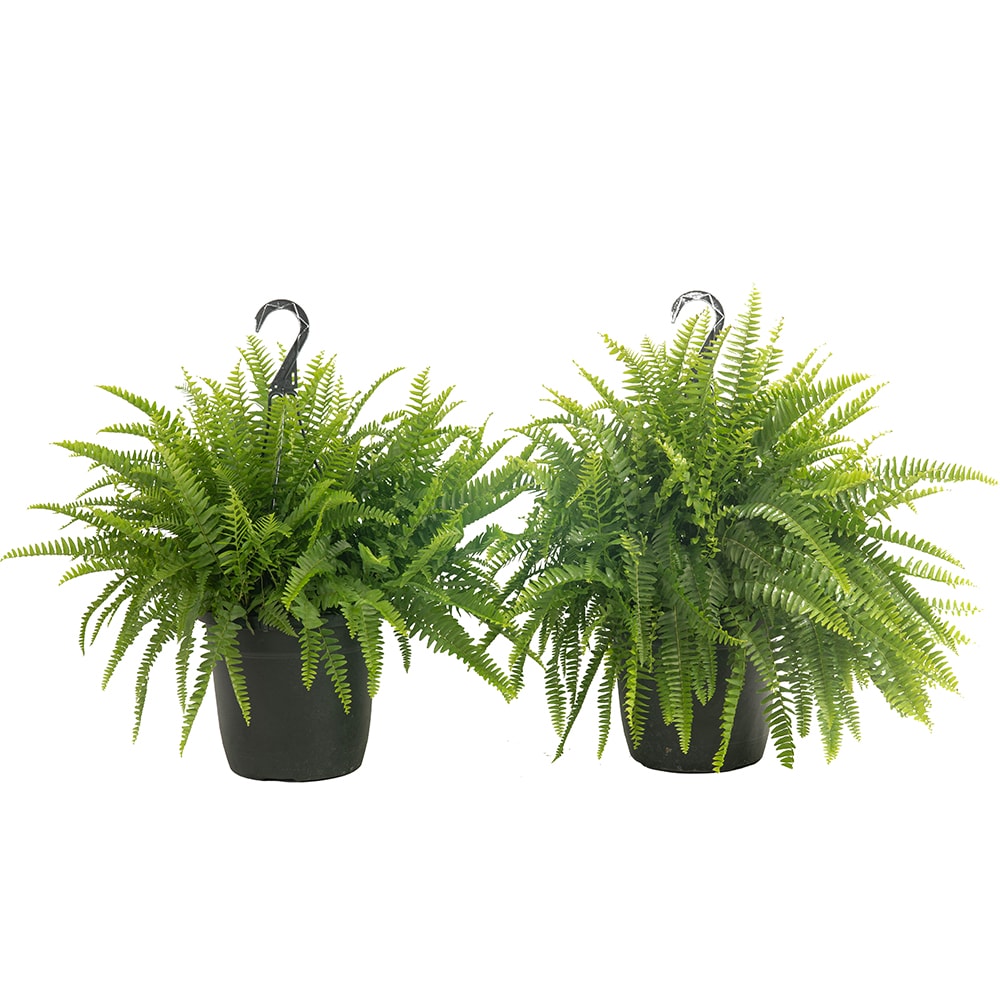
There are a number of indoor ferns that are not only popular indoor plants but are also easy to care for inside. If you are looking for a fern to beautify your home, we will give you a list of the most popular, you just have to keep them away from drafts, dry air and extreme temperatures to make them happy too.
The first is the Staghorn Fern (Platycerium) with its wonderful horn-like leaves; it is among the best plants to hang on the wall. Then Bird’s Nest Fern (Asplenium nidus) has curvy leaves that change shape depending on the amount of light exposure. Boston Fern (Nephrolepis exaltata) is also a very good choice, it has vibrant light green leaves that make it a really beautiful indoor hanging plant. Maidenhair Fern (Adiantum) is also a beautiful indoor hanging plant with its light gray-green, feather-like foliage.
Did you find this helpful? Share it with your friends!

